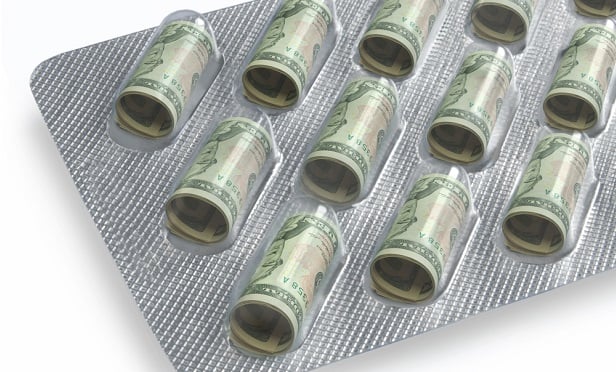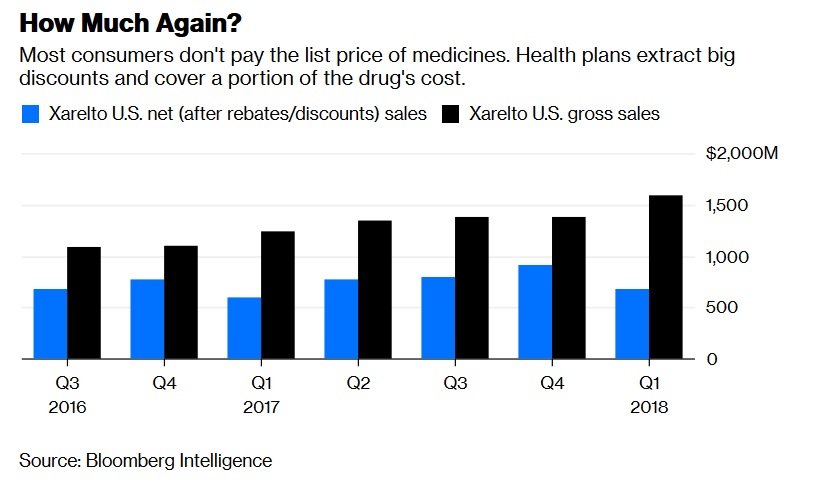 Johnson & Johnson will voluntarily disclose this price in its direct-to-consumer commercials, starting with ads for blood thinner Xarelto by late March. (Photo: Shutterstock)
Johnson & Johnson will voluntarily disclose this price in its direct-to-consumer commercials, starting with ads for blood thinner Xarelto by late March. (Photo: Shutterstock)
Johnson & Johnson appears to have listened to President Donald Trump's State of the Union Address.
Trump, in a portion of his speech devoted to health care, called on pharmaceutical companies to reveal “real prices” – presumably a reference to an administration proposal that would require drugmakers to show the full sticker price, or list price, of medicines in TV ads. J&J is jumping the gun, with plans to voluntarily disclose this price in its direct-to-consumer commercials, according to a blog post released Thursday. The company will start with ads for blood thinner Xarelto by late March, and then move on to other medicines. It's the first drugmaker to announce such a step.
Related: Eli Lilly says 'no' to TV list prices but offers a compromise
The move seems designed to give Trump a win, and it appears to have earned J&J a bit of goodwill: Health and Human Services Secretary Alex Azar released an approving statement Thursday evening. But it won't do anything to dismiss more threatening drug-price proposals that still loom for pharma, and may not give patients much clarity, either.
The idea behind the administration's proposal is that by requiring drugmakers to prominently display their often sky-high list prices, it may shame them into lowering them. Pharma opposes it, arguing that list prices are meaningless to most Americans because health plans often negotiate huge discounts with drugmakers and consumers usually pay only a portion of a lower price themselves. In fact, drug companies have claimed that showing an inflated price in TV ads may discourage people from seeking needed medicines.
In a mitigating tactic, Johnson & Johnson's planned price disclosure will include an estimate of what typical patients actually pay for drugs, something that Trump's proposed mandate doesn't include. That will make the much higher list price much less scary. But it also could confuse patients exposed to a higher-than-average price because they pay co-insurance on some drugs or have a high deductible plan. It's tough to fit those nuances into a 30-second TV spot.

This isn't exactly what the administration wants. But it's closer than Eli Lilly & Co's move to direct consumers who see its ads to a website with hand-picked pricing information. And it could be just enough for the president to declare victory and move on, without much in the way of pain for J&J or any firms that elect to copy it. It's reminiscent of the industry's move to freeze prices in 2018 after the president began specifically criticizing certain firms. Despite the fact that those freezes were temporary and that the few price cuts largely meaningless, the strategy kind of worked.
Even if the administration doesn't see right through this and J&J doesn't end up having to disclose list prices alone, it will only be a small reprieve. Moreover, the price-shaming measure pales in comparison to Trump's most dangerous proposal, which would tie the price of certain drugs paid for by the government to the much lower prices charged for the same medicines in other countries. (This proposal also got called out obliquely in the State of the Union.)
Potential Democratic presidential candidates Sherrod Brown and Amy Klobuchar combined with House Democrats Thursday to announce an even more damaging bill that would give the government enhanced power to negotiate drug prices as well as the ability to strip drug-patent exclusivity from firms that don't play ball.
Both plans would significantly bring down prices and hurt pharma's bottom line. Neither will be averted with an ad-tweak or five-month price hike pause. The sooner pharma comes up with a better answer for how it prices its medicines, the better.
Read more:
- TV list prices for drugs could be a turnoff for consumers, study says
- Listing drug prices on TV: Does it really benefit consumers?
- Drug price transparency takes a step forward
Max Nisen ([email protected]) is a Bloomberg Opinion columnist covering biotech, pharma and health care. He previously wrote about management and corporate strategy for Quartz and Business Insider. This column does not necessarily reflect the opinion of the editorial board or Bloomberg LP and its owners. To contact the editor responsible for this story: Beth Williams at [email protected]
© 2025 ALM Global, LLC, All Rights Reserved. Request academic re-use from www.copyright.com. All other uses, submit a request to [email protected]. For more information visit Asset & Logo Licensing.







